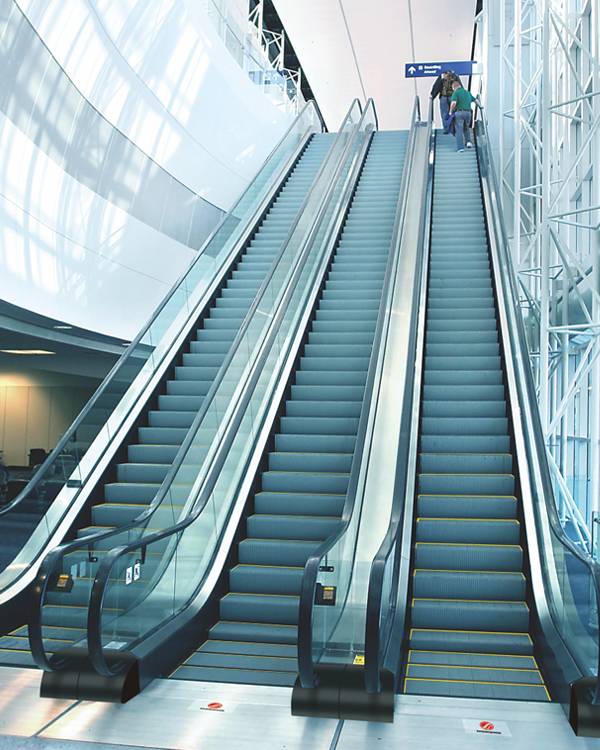China Glass Lifts Manufacturers,Food Elevators Suppliers +86-572-3305657
China Glass Lifts Manufacturers,Food Elevators Suppliers +86-572-3305657
The Escalator is a power-driven, continuously moving st […]
The Escalator is a power-driven, continuously moving stairway designed to transport passengers up and down short vertical distances. They are used worldwide in shopping centers, airports, trade centers, hotels, and public buildings to provide pedestrian transportation in areas that would otherwise be impractical for elevators.
A truss forms the core of an escalator's design and holds the curved track sections, motors, and gears together. The truss also keeps the entire mechanism connected to the floors, and it is this structure that supports the steps as well as the moving handrail.
Each step is powered by an electric motor that rotates a pair of chains looped around another set of gears. The escalator's handrail also is powered by the same motor, which moves it along its path at a speed similar to the movement of the steps.
In addition to a motor, an escalator typically contains two platforms: the top platform holds the motor assembly and the drive gears that turn the chain loops on either side; the lower platform is where the step return wheels or gears are located. The ends of the truss are attached to these platforms with steel or concrete supports, and they carry tracks that connect both the upper and lower sections of the escalator.
The escalator steps are interlocking and designed to always step level as they move. They are powered by a motor and chain system inside a hollow metal structure called the truss. This truss is designed to support the steps, the motors, and the gears, but it is also shaped so that the steps collapse down on themselves at the bottom of the escalator, creating a flat platform at both ends of the escalator.
It is advisable to choose a design that fits into your space and is comfortable for you, rather than one that is aesthetically pleasing or designed to attract the eye of passersby. If you are in a large building, you should also take the time to think about how you can place the escalator so that it does not crowd other spaces and is easy for others to walk on.
When stepping on an escalator, keep loose clothing clear of the sides and steps, and make sure that you step promptly onto each moving step. Hold children or small packages firmly with one hand and then grip the handrail in the other.
You should also try to keep your feet and legs out of the way of the moving steps, as these are prone to catching people's shoes. If you must use a cane, walker or wheeled device, make sure it is securely fastened to your body so that it does not cause an accident.
Safety and security are the primary concerns when evaluating an escalator's design. Some safety considerations include the angle of inclination, the maximum travel distance per second, and the number of passengers that can be transported.
The inclination of an escalator is typically 30 degrees. This inclination allows the steps to accommodate passengers of various heights without compromising safety. A 35-degree inclination is often recommended for larger facilities, such as department stores and malls. This inclination is ideal for handling peak traffic.

Product Type: Escalator
Target Markets: Supermarket, shopping mall
Tilt Angle: 30 ° / 35 °
Step Width (mm): 600/800/1000
Operating Speed (m / s): 0.5
Horizontal Steps: 2/3
Rated speed (m/s): 0.5/1.0
Lifting Height (m): 3.0 - 9.7
Arrangement: One-way traffic / two-way traffic / cross
Please leave your Email or phone nomber, so we can contact you as soon as possible.